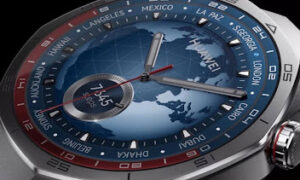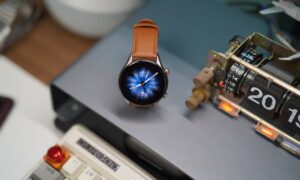Are you ready to dive into the fascinating world of wearable tech? Over the past few years, our society has witnessed an extraordinary rise in the popularity and functionality of fitness trackers, smartwatches, and other innovative devices that have revolutionized the way we approach our health. From counting our steps to monitoring our heart rate and sleep patterns, these tiny gadgets have become essential companions on our journey towards a healthier lifestyle. Join us as we explore how this disruptive technology is reshaping not only the way we track and manage our well-being but also how it holds incredible potential for advancing healthcare as a whole. Let’s take a closer look at The Rise Of Wearable Tech.
What is wearable technology?
Wearable technology has come a long way in recent years, and there’s no sign of it stopping. From fitness trackers to smartwatches, wearable tech is giving people unprecedented insights into their health and daily habits. Here are four ways wearable technology is reshaping our health:
1. Fitness trackers are helping people stay on track with their workouts. Fitness trackers have been around for some time now, but they’ve recently taken off in popularity thanks to their usefulness in tracking one’s progress. Whether you’re a beginner or an experienced exerciser, a fitness tracker can help you keep tabs on your progress and provide optimize workout routines accordingly. Not only that, but many fitness trackers also include features like guided workouts and logging of meals to help youtrack your weight loss or diet goals more accurately.
2. Smartwatches are becoming increasingly popular as smart devices go. Smartwatches have a lot of the same features as regular watches, but they also includeaccess to apps that allow users to control various functions of their devices without having to take out their phones. Some popular smartwatch apps include the Apple Watch’s tracking capabilities for heart rate and exercise activity (eactivity), Nest’s voice assistant which lets residents control thermostats and other appliances in their home from their watch (even when they’re out of town), Uber’s ride hailing app which lets users monitor the status of their current Uber ride without having to take
Types of wearables
The wearable technology market is growing at a rapid pace, and there are a variety of products to choose from. Fitness trackers fall into two types: those that measure steps taken, and those that monitor heart rate and other physical activity indicators. Smartwatches are similar to fitness trackers in that they can track activity and sleep patterns, but they also offer features like notifications for incoming text messages or phone calls, the ability to control media playback, and access to the internet. There are also watches designed as fashion accessories, such as the Apple Watch. Other types of wearables include pacemakers, which can be controlled using smart devices; virtual reality headsets; and Glasses That Don’t Require Wi-Fi. While each product has its own advantages and disadvantages, wearable technology is quickly becoming one of the most popular ways to stay healthy and connected.
Fitness trackers
Fitness trackers have become increasingly popular in recent years as a means to improve one’s health and fitness. These sensors track many different fitness metrics, including steps taken, calories burned, heart rate, sleep quality, and more, and often connect to mobile apps or websites where users can monitor and log their data.
One of the most popular types of fitness trackers are smartwatches. These watches typically include basic features such as a clock, calendar, messaging capabilities, and a range of sensors that allow them to track activity levels and other metrics. They often have greater functionality than standard wristwatch devices and are becoming increasingly popular as standalone devices intended for use with smartphones. In addition to tracking fitness data, smartwatches are commonly used to control applications on smartphones using hand gestures or voice activation.
Another type of wearable technology that is gaining popularity is the Fitbit tracker. Fitbits come in a variety of styles and sizes and attach directly to clothing or armor so they’re not easily removable. Unlike smartwatches and other standalone wearable devices that rely on an iPhone or Android device for connectivity, Fitbits communicate with individual Fitbit devices as well as the Internet-basedFitbit account software. This allows users to track their progress Wirelessly across multiple electronic platforms.
The popularity of fitness trackers has led to the development of many different apps and websites that allow users to monitor their progress and share data with others. Examples of these apps and websites include the Nike+ Fitness app, Garmin Connect, Samsung Health, RunKeeper, Strava, and MyFitnessPal.
Smartwatches
Smartwatches are wearable technology devices that can be used to track a person’s fitness activity and health data. These watches are often connected to smartphones or other devices, which can then provide access to the user’s health data and other information. The popularity of these watches is likely due in part to their ability to allow people to monitor their own health data and activities, as well as staying up-to-date on current trends and news.
Health tracking features of wearables
There is a growing number of wearable health tracking features available to consumers these days. These devices help monitor your physical activity, heart rate, and other health data in order to keep you on track and improve your overall wellness. While there are many different wearables on the market, each has its own set of features that can be beneficial to your overall health.
A fitness tracker consists of a band and an accompanying app that logs all of your fitness activity. This information can be accessed on any device with internet access, so you can watch or share your progress with others. Fitness trackers often include sensors to track things like steps taken, calories burned, distance traveled, and more. They also often have sleep tracking capabilities so you can see how much sleep you’re getting each night and determine if any changes need to be made.
Smartwatches are similar to fitness trackers in many ways, but they typically lack the band component and instead rely on Bluetooth technology for communication between the watch and your smartphone or other device. This makes them thinner and less conspicuous than fitness trackers, which may be more comfortable for everyday wear. Smartwatches typically come in multiple sizes and styles, some with built-in displays and others that display content from an external device like a smartphone or tablet. Some smartwatches also include features like step counting and heart rate monitoring capabilities.
While there are many different types of wearables out there designed for various purposes, all of them have the potential to help you improve your health in some way. By tracking your physical activity, heart rate, and other data, you can identify patterns that may suggest areas where you need to focus on improving your wellness. And by sharing your progress with others, you can help become more accountable for your own success.
Conclusion
In this ever-changing world, the trend of wearable tech is continuing to reshape our health and well-being. With devices like fitness trackers and smartwatches that monitor our daily routine and activity level, we are becoming more aware of how we can improve our overall health by making small tweaks to our lives. What was once a rarity is now moving more mainstream, so if you’re looking for ways to make your physical and spiritual wellness a priority, check out some of the best wearable tech on the market today.


































